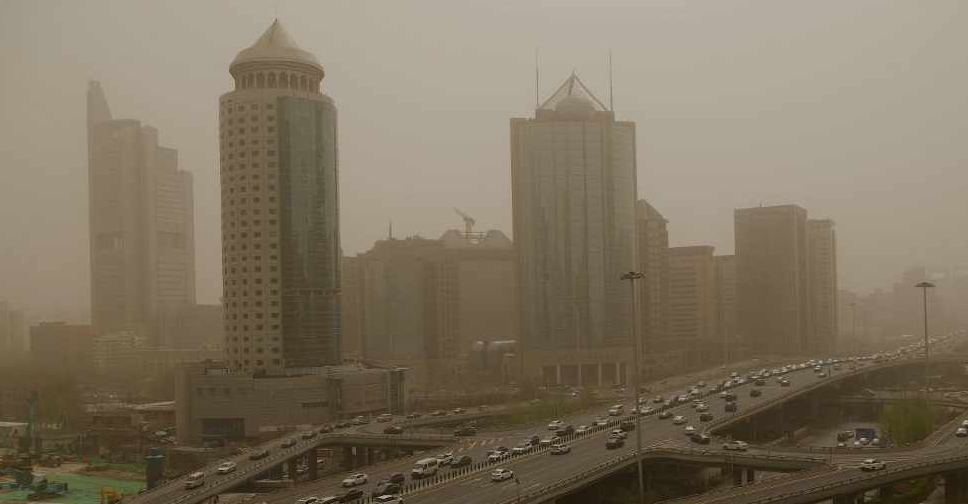
The Chinese capital Beijing woke on Sunday morning shrouded in thick dust carrying extremely high levels of hazardous particles, as a second sandstorm in two weeks hit the city.
Visibility in the city was reduced, with the tops of some skyscrapers obscured by the sandstorm, and pedestrians were forced to cover their eyes as gusts of dust swept through the streets.
Beijing's official air quality index reached a maximum level of 500 on Sunday morning, with floating particles known as PM10 surpassing 2,000 micrograms per cubic metre in some districts.
Readings of smaller PM2.5 particles were above 300 micrograms per cubic metre, far higher than China's standard of 35 micrograms.
PM2.5 particles are especially harmful because they are very tiny and can enter the bloodstream, while PM10 is a larger particle that can enter the lungs.
The China Meteorological Administration issued a yellow alert on Friday, warning that a sandstorm was spreading from Mongolia into northern Chinese provinces including Inner Mongolia, Shanxi, Liaoning and Hebei, which surrounds Beijing.
The meteorological office said the recent sandstorms to hit Beijing originated from Mongolia, where relatively warmer temperature this spring and reduced rain resulted in larger areas of bare earth, creating favorable conditions for sandstorms.
Beijing might face more sandstorms in April due to the unfavorable weather this year, the meteorological office said.




 UK, Canada, Germany and others condemn Israel's West Bank settlement plan
UK, Canada, Germany and others condemn Israel's West Bank settlement plan
 Russia plans nuclear power plant on the moon within a decade
Russia plans nuclear power plant on the moon within a decade
 Southeastern Taiwan shaken by 6.1 magnitude quake
Southeastern Taiwan shaken by 6.1 magnitude quake
 At least two killed in Pennsylvania nursing home explosion
At least two killed in Pennsylvania nursing home explosion
 Turkey says electrical failure reported before Libyan military jet crash
Turkey says electrical failure reported before Libyan military jet crash




